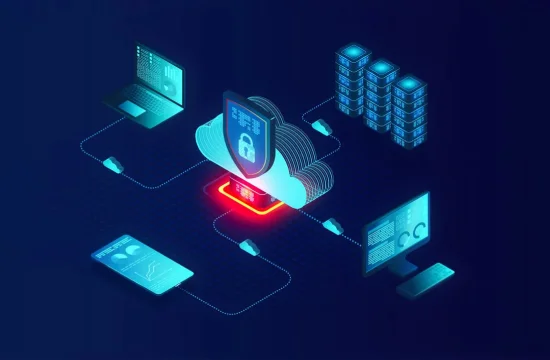Key Features of EPP vs EDR
When comparing Endpoint Protection Platforms (EPP) and Endpoint Detection and Response (EDR),understanding their key features is essential to determining which solution best fits your organization’s cybersecurity needs. Both technologies aim to secure endpoints—devices like laptops, desktops, and servers—but they differ significantly in their approach, capabilities, and scope. Let’s dive into the standout features of each and how they address modern security challenges.
EPP: Prevention at the Core
An Endpoint Protection Platform is designed with a prevention-first mindset. Its primary goal is to stop threats before they can infiltrate a system. One of its cornerstone features is antivirus and anti-malware protection, which relies on signature-based detection to identify and block known viruses, ransomware, and other malicious software. This is complemented by real-time scanning, ensuring files, applications, and incoming data are continuously checked for threats. EPP solutions also often include firewall capabilities, which monitor and control network traffic to prevent unauthorized access.
Another key feature of EPP is application control, allowing administrators to whitelist or blacklist specific programs, reducing the risk of unapproved or harmful software running on endpoints. Additionally, data loss prevention (DLP) tools are frequently integrated, helping organizations safeguard sensitive information by blocking unauthorized transfers or access. EPP platforms are typically centralized and automated, providing IT teams with a single dashboard to manage security policies across all endpoints. This makes them particularly valuable for businesses seeking a straightforward, low-maintenance solution to handle common threats.
EDR: Detection and Response Powerhouse
In contrast, Endpoint Detection and Response takes a more dynamic approach, focusing on identifying, investigating, and mitigating threats that bypass initial defenses. A defining feature of EDR is continuous monitoring and data collection, which records endpoint activities—such as process executions, file changes, and network connections—in real time. This creates a detailed activity log that security teams can analyze to spot anomalies or suspicious behavior.
EDR shines with its threat hunting and forensic capabilities. Unlike EPP’s reliance on known threat signatures, EDR uses behavioral analysis and machine learning to detect advanced persistent threats (APTs),zero-day exploits, and other sophisticated attacks. When a threat is identified, EDR offers incident response tools, such as isolating compromised devices, killing malicious processes, or rolling back changes to restore systems to a safe state. This rapid response minimizes damage and downtime.
Another standout feature is integration with threat intelligence feeds, which provide up-to-date information on emerging threats, enhancing EDR’s ability to adapt to new attack vectors. Additionally, EDR solutions often include detailed reporting and visualization, giving security analysts a clear picture of an attack’s timeline, scope, and impact. This makes EDR ideal for organizations with dedicated security teams that need deep visibility and control.
Key Differences in Focus
The primary distinction lies in their focus: EPP is proactive, aiming to block threats at the gate, while EDR is reactive, excelling at identifying and neutralizing threats that slip through. EPP’s features are streamlined for ease of use and broad protection, making it a fit for small to medium-sized businesses with limited resources. EDR, with its advanced analytics and response capabilities, suits larger enterprises or those facing complex, evolving threats.
In essence, EPP provides a strong foundation for endpoint security, while EDR builds on that with enhanced detection and response. Many modern organizations opt for a hybrid approach, combining both to achieve comprehensive protection tailored to their risk profile. Understanding these key features helps clarify which solution—or combination—aligns with your security goals.
How EPP and EDR Work Together
In an era where cyber threats are increasingly sophisticated, relying on a single layer of endpoint security may not suffice. Combining an Endpoint Protection Platform (EPP) with Endpoint Detection and Response (EDR) creates a robust, multi-layered defense strategy that leverages the strengths of both technologies. Together, they provide comprehensive protection by preventing known threats, detecting advanced attacks, and enabling swift responses. Here’s how EPP and EDR collaborate to safeguard endpoints effectively.
Complementary Roles in Threat Management
EPP and EDR serve distinct yet complementary purposes. EPP acts as the first line of defense, focusing on prevention. Its features—like antivirus, firewalls, and application control—block known malware, ransomware, and phishing attempts before they can execute. By stopping the majority of common threats at the entry point, EPP reduces the attack surface and lightens the load on subsequent security layers.
However, no prevention system is foolproof, especially against zero-day exploits or advanced persistent threats (APTs) that evade signature-based detection. This is where EDR steps in. With its continuous monitoring and behavioral analysis, EDR picks up where EPP leaves off, identifying anomalies or suspicious activities that slip past initial defenses. For example, if a file bypasses EPP’s scans but begins encrypting data (a sign of ransomware),EDR can detect this behavior, flag it, and trigger a response. Together, they create a seamless workflow: EPP prevents what it can, and EDR handles what it can’t.
Unified Visibility and Control
When integrated, EPP and EDR provide a unified security ecosystem. EPP’s centralized management console can be paired with EDR’s detailed telemetry, giving IT and security teams a holistic view of endpoint health. For instance, EPP might log a blocked malware attempt, while EDR provides deeper context—like the source IP, affected processes, or lateral movement attempts—enabling a more informed response. This synergy eliminates silos, ensuring all endpoint data is actionable and accessible from a single pane of glass.
Enhanced Incident Response
The collaboration between EPP and EDR shines during incident response. If EDR detects a threat, it can leverage EPP’s capabilities to isolate the affected endpoint from the network, preventing further spread. EDR’s forensic data then guides the investigation, pinpointing the attack’s origin and scope, while EPP’s automation can deploy patches or updates to vulnerable devices. This tag-team approach minimizes downtime and damage. For example, during a phishing campaign, EPP might block the malicious email attachment, but if a user clicks a link that EPP misses, EDR can trace the resulting command-and-control communication and neutralize it.
Proactive and Reactive Balance
EPP’s proactive measures—like whitelisting approved applications—reduce the number of incidents EDR needs to investigate, allowing security teams to focus on high-priority threats. Meanwhile, EDR’s threat intelligence feeds can inform EPP’s signature database, keeping it updated against emerging risks. This feedback loop ensures both systems evolve together, adapting to new attack vectors as they arise.
Real-World Application
Consider a mid-sized company facing diverse threats. Its EPP blocks routine malware daily, but when a targeted attack exploits an unpatched vulnerability, EDR detects unusual outbound traffic, isolates the device, and alerts the team. The EPP then applies the patch across all endpoints, while EDR monitors for recurrence. This partnership maximizes protection without overwhelming resources.
By combining EPP’s prevention with EDR’s detection and response, organizations achieve a balanced, resilient security posture. It’s not about choosing one over the other—it’s about harnessing their collective power to stay ahead of cybercriminals.
Why EDR is Essential for Modern Threats
As cyber threats evolve in complexity and stealth, traditional security measures like Endpoint Protection Platforms (EPP) alone are no longer sufficient to safeguard organizations. Endpoint Detection and Response (EDR) has emerged as a critical tool in combating modern threats, offering advanced capabilities to detect, investigate, and mitigate attacks that bypass conventional defenses. From zero-day exploits to ransomware and insider threats, EDR addresses the challenges of today’s dynamic threat landscape. Here’s why EDR is indispensable for modern cybersecurity.
Tackling Sophisticated and Evasive Attacks
Modern threats, such as advanced persistent threats (APTs) and fileless malware, are designed to evade signature-based detection, a cornerstone of EPP solutions. EDR counters this by employing behavioral analysis and machine learning, which monitor endpoint activities for unusual patterns—like unauthorized process executions or abnormal network connections—rather than relying solely on known threat signatures. For instance, if a legitimate application is hijacked to deliver malicious code, EDR can spot the anomaly and act, where traditional tools might miss it. This ability to detect zero-day exploits and polymorphic malware makes EDR a vital defense against attacks that evolve to avoid recognition.
Real-Time Visibility into Endpoint Activity
One of EDR’s standout strengths is its continuous monitoring and data collection, providing real-time visibility into what’s happening across all endpoints. This granular insight—capturing file changes, registry edits, and network traffic—enables security teams to identify threats as they unfold. In a ransomware attack, for example, EDR can detect the encryption process in its early stages, alerting teams before widespread damage occurs. This level of transparency is essential in an era where attackers move quickly to exploit vulnerabilities, often within minutes of a breach.
Rapid Response to Minimize Impact
Detection is only half the battle; response speed is equally critical. EDR equips organizations with automated response tools, such as isolating compromised devices, terminating malicious processes, or rolling back changes to a pre-attack state. This rapid containment limits the spread of threats like lateral movement in a network, a common tactic in modern attacks targeting sensitive data. For instance, during a phishing campaign that deploys a remote access trojan, EDR can quarantine the affected endpoint and block communication with the attacker’s server, preventing data exfiltration. This agility reduces downtime and financial loss, making EDR a game-changer for incident management.
Addressing Insider Threats and Compliance
Modern threats aren’t always external—insider risks, whether malicious or accidental, are on the rise. EDR’s detailed logging and forensic capabilities allow organizations to track user actions, detect unauthorized access, or identify data leaks. This is particularly valuable for meeting compliance requirements, such as GDPR or HIPAA, which demand robust auditing and incident reporting. If an employee inadvertently installs a malicious USB drive, EDR can trace the event, assess its impact, and provide evidence for regulatory reports, ensuring accountability and protection.
Adapting to an Evolving Threat Landscape
Cybercriminals constantly innovate, leveraging tactics like living-off-the-land attacks that use legitimate system tools to avoid detection. EDR’s integration with threat intelligence feeds keeps it ahead of the curve, updating its detection capabilities with the latest attack signatures and techniques. This adaptability ensures EDR remains effective against emerging threats, unlike static defenses that can become obsolete. For businesses facing targeted attacks—common in industries like finance or healthcare—EDR’s proactive threat hunting capabilities allow teams to search for lurking dangers before they strike.
In today’s world, where breaches are not a matter of “if” but “when,” EDR is essential for its ability to detect the undetectable, respond in real time, and provide actionable insights. It’s the difference between reacting to a breach after the fact and stopping it in its tracks, making it a cornerstone of modern cybersecurity strategies.
Choosing the Right Endpoint Security Solution
Selecting the appropriate endpoint security solution—whether an Endpoint Protection Platform (EPP),Endpoint Detection and Response (EDR),or a combination of both—is a critical decision for any organization. With cyber threats ranging from basic malware to sophisticated, targeted attacks, the choice depends on your business’s size, resources, risk profile, and security goals. Understanding the strengths of EPP and EDR, and aligning them with your specific needs, ensures you invest in a solution that provides optimal protection. Here’s how to navigate this decision-making process effectively.
Assessing Your Threat Landscape
The first step in choosing the right solution is evaluating the threats your organization faces. Small to medium-sized businesses (SMBs) with limited IT resources might encounter common threats like ransomware, phishing, or commodity malware. For these, an EPP is often sufficient, offering proactive prevention through antivirus, firewalls, and application control. Its simplicity and automation make it ideal for organizations without dedicated security teams. Conversely, larger enterprises or industries like finance and healthcare—prime targets for advanced persistent threats (APTs) or zero-day exploits—need EDR’s advanced detection and response capabilities. If your business operates in a high-risk sector or handles sensitive data, EDR’s ability to tackle evasive attacks becomes a necessity.
Matching Resources and Expertise
Your available resources play a significant role in this decision. EPP solutions are typically low-maintenance and user-friendly, requiring minimal expertise to deploy and manage. They’re a cost-effective choice for SMBs or teams with basic IT skills, providing broad protection without overwhelming staff. EDR, however, demands more technical expertise and active management. Its continuous monitoring, threat hunting, and incident response features require skilled security analysts to interpret data and act on alerts. If your organization lacks a security operations center (SOC) or trained personnel, EDR’s full potential might go underutilized, making a hybrid approach with managed services a viable middle ground.
Balancing Cost and Coverage
Budget constraints often influence the choice between EPP and EDR. EPP tends to be more affordable, with straightforward licensing and predictable costs, making it appealing for organizations prioritizing value and simplicity. EDR, while more expensive due to its advanced features and infrastructure demands, offers greater long-term ROI for those facing complex threats. A data breach can cost millions in damages, downtime, and lost trust—far exceeding EDR’s upfront price. To optimize costs, consider your risk tolerance: if downtime or data loss would cripple your operations, investing in EDR (or both) outweighs the expense of recovery.
Evaluating Integration and Scalability
Another key factor is how well the solution integrates with your existing systems and scales with growth. EPP often comes as a standalone, all-in-one package, easily deployed across endpoints with minimal disruption. It’s a solid choice for static environments with predictable needs. EDR, however, excels in dynamic, interconnected ecosystems, integrating with threat intelligence platforms, SIEM systems, and other security tools. If your organization plans to expand or adopt cloud-based operations, EDR’s scalability and adaptability provide future-proofing. For growing businesses, a combined EPP-EDR solution ensures foundational protection now and advanced capabilities later.
Hybrid Approach: The Best of Both Worlds
For many organizations, the question isn’t “EPP or EDR?” but “How can they work together?” A hybrid strategy leverages EPP’s prevention to block routine threats and EDR’s detection to handle sophisticated breaches. This layered defense reduces the burden on IT teams while maximizing coverage. Many vendors now offer unified platforms that blend both, allowing seamless transitions as needs evolve. Assess your vendor’s offerings—look for flexibility, support, and compatibility with your infrastructure.
Ultimately, choosing the right endpoint security solution requires balancing your threat exposure, resources, budget, and growth plans. For basic protection, EPP is a reliable starting point. For advanced threats and proactive defense, EDR is essential. For comprehensive security, a combined approach delivers resilience in an unpredictable digital world.






